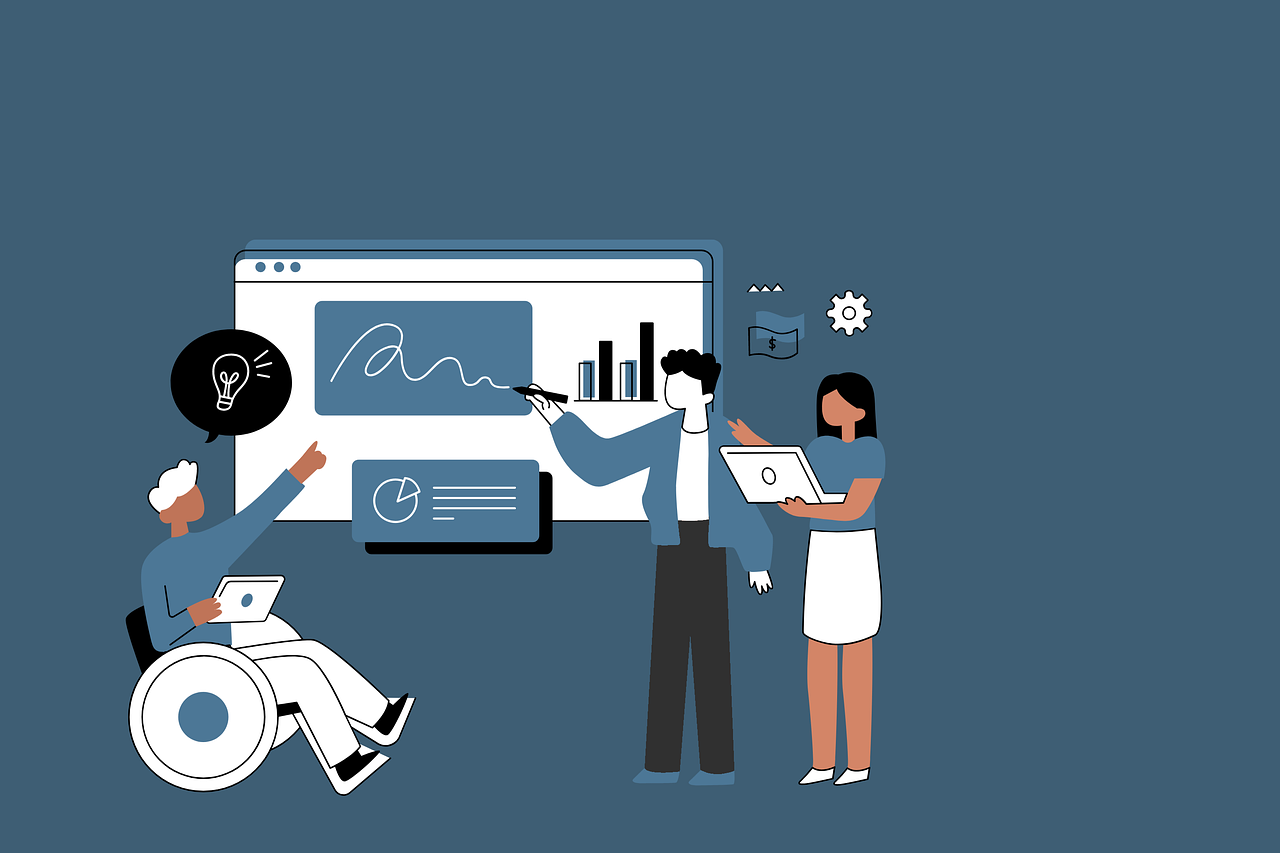Imagine spending months, or even years, learning a new skill, only to step into a real-world project and feel completely lost. The theory is in your head, but the practical application is a mystery. This frustrating gap between knowing and doing is the single biggest hurdle in education and professional development today.
But what if there was a way to learn that built a bridge over that gap from day one? Enter duaction.
This emerging concept is rapidly gaining traction for its powerful, almost intuitive approach. Duaction is the strategic pairing of learning and doing into a single, streamlined process. It’s not just learning and then applying; it’s applying as you learn, creating a feedback loop that accelerates mastery and builds genuinely job-ready skills. Let’s dive into how this “dual-action” method is changing the game.
What Exactly is Duaction? Breaking Down the Buzzword
At its heart, duaction is a portmanteau of “dual” and “action.” It represents two complementary processes working in concert. While it’s being popularized as an educational brand, the core idea is a universal principle that can be applied far beyond the classroom.
Think of it like learning to drive. You don’t just read a manual (theory) and then immediately get on a busy highway (practice). A proper driver’s education uses duaction: you learn about a mirror’s purpose and then immediately check it. You understand the clutch while your foot is engaging with it. The learning and the doing are inseparable, each action reinforcing the other.
In a broader sense, we see duaction in:
- Product Design: User research (learning) directly informs prototype tweaks (doing), which are then tested again (more learning) in a continuous cycle.
- Project Management: Planning a sprint (learning) and executing its tasks (doing) happen simultaneously, with daily stand-ups serving as the sync point.
- Personal Fitness: You learn about proper form and then immediately execute the movement, using muscle memory as your guide.
Why Duaction Matters More Than Ever in Today’s World
We’re living in the information age, but we’re drowning in theory. Tutorials, online courses, and webinars are abundant, yet many learners finish them without the confidence to tackle a real project. This creates a massive skills gap that frustrates both employees and employers.
Duaction directly tackles this problem head-on. Its importance boils down to a few key benefits:
- Fights Cognitive Overload: Our brains retain information better when it’s tied to a concrete task. Duaction anchors abstract concepts in physical (or digital) action, making them stick.
- Builds Problem-Solving Muscle: You don’t just learn the right answer; you learn how to find it when faced with a novel challenge, which is what employers truly value.
- Creates Measurable Outcomes: Instead of a certificate of completion, you finish a duaction-based program with a portfolio of actual work—a website, a business plan, a functioning app module.
- Boosts Motivation and Engagement: The immediate satisfaction of seeing your learning turn into something tangible is a powerful motivator to keep going.
How Duaction Works in Practice: A Real-World Case Study
Let’s make this concrete. Meet Maria, a marketing professional who wants to pivot into UX design.
The Traditional Path:
Maria signs up for a popular online UX course. She spends six weeks watching video lectures, reading about user personas, and learning the principles of Figma. She earns a certificate but has never actually conducted user research or built a complex prototype from scratch. When she starts applying for jobs, she struggles to talk about her process because she doesn’t really have one.
The Duaction Path:
Maria enrolls in a program built on the duaction principle. Her first “module” isn’t a lecture; it’s a project brief: “Design a checkout flow for an e-commerce app.”
- Step 1 (Micro-Learning): She spends 20 minutes learning the basics of user interviews.
- Step 2 (Immediate Action): She drafts and conducts three short interviews with friends to understand pain points.
- Step 3 (Micro-Learning): She watches a tutorial on creating user flow diagrams.
- Step 4 (Immediate Action): She translates her interview insights into a concrete user flow for the project.
- This cycle continues until she has a tested, high-fidelity prototype.
The outcome? Maria has a finished project in her portfolio and has lived the entire UX design process. She can speak confidently about her choices because she made them in real-time. This is the power of duaction.
Applying the Duaction Principle in Your Own Life
You don’t need a formal program to harness this concept. Whether you’re learning to code, play guitar, or master Excel, you can integrate a dual-action approach.
| Traditional Learning | Duaction Learning |
|---|---|
| Read a Python book for two weeks. | Learn one function, then immediately write a small script using it. |
| Watch all videos of a guitar course. | Learn one chord, then immediately play a simple song snippet with it. |
| Memorize Excel formula syntax. | Learn the VLOOKUP formula, then immediately use it to analyze a real dataset. |
Your action plan:
- Start with a Tiny Project: Don’t aim to “learn data science.” Aim to “analyate my personal spending using Python.”
- Identify the First Step: What’s the very first thing you need to know? (e.g., how to import a CSV file).
- Learn Just Enough: Find a single resource (a 5-minute video, a short article) that teaches that one micro-skill.
- Take Immediate Action: Apply it directly to your project file. Right now.
- Repeat: What’s the next logical step? Need to clean the data? Go learn just how to do that and then do it.
The Future is Active: Where Duaction is Headed
As education continues to evolve towards greater personalization and efficiency, methodologies like duaction are leading the charge. We’re moving away from passive consumption of information and towards active creation. This isn’t just a trend for individual learners; forward-thinking companies are adopting duaction principles for employee training, creating internal project-based learning paths that upskill teams on real company challenges.
The ultimate goal is a world where education isn’t a separate phase of life but an integrated, continuous cycle of learning and doing—a true duality of action.
Your Takeaways: How to Embrace Duaction Today
Ready to close your own knowledge-to-practice gap? Here are three things you can do right now:
- Reframe Your Learning Goal: Shift from “I will learn X” to “I will build Y using X.” The project is the goal; the skill is the tool.
- Break It Down: The biggest barrier to action is overwhelm. Chop your project into the smallest possible actionable steps.
- Just-in-Time Learning: Resist the urge to stockpile knowledge. Learn only what you need to accomplish the very next task in front of you.
The most successful people aren’t just the ones who know the most; they’re the ones who can do the most with what they know. Will you try a duaction approach for your next learning goal?
You May Also Read: Your Campus, Connected: How GU iCloud Puts Galgotias University at Your Fingertips
FAQs
Is Duaction just another name for project-based learning?
It’s a close cousin! While project-based learning is a broader framework, duaction specifically emphasizes the immediate, simultaneous cycle of learning a micro-skill and applying it. It’s about the tight, iterative loop between the two actions.
I’m a teacher/ trainer. How can I bring duaction into my classroom?
Redesign your curriculum around projects first. For each class or module, ask: “What is the smallest thing my students can make or do today that applies what I’m about to explain?” Start with the action, then provide the theory just-in-time to support it.
Doesn’t this approach risk creating gaps in foundational knowledge?
It’s a valid concern. The key is that the foundational knowledge is still covered, but it’s covered on a need-to-know basis. You learn the fundamentals of grammar by writing sentences, not by memorizing the entire textbook first. The foundation is built brick-by-brick through application.
Where can I find formal duaction programs or resources?
As an emerging concept, it’s best to search for terms like “project-based learning,” “experiential learning,” or “bootcamps” that emphasize portfolio building. The specific term “duaction” is still being adopted by new education brands, so keep an eye out for it.
Can duaction be used for soft skills like leadership or communication?
Absolutely. For example, you could learn one principle of constructive feedback (learning) and then immediately practice it in your next team meeting (doing). The action might be less “technical,” but the cycle of learn → act → refine remains perfectly applicable.
Is this only for adults and professional skills?
Not at all! This is how children learn naturally—through play and experimentation. Applying duaction in younger education means fostering more inquiry-based, hands-on classrooms where students learn science by doing experiments, not just reading about them.
What’s the biggest mistake people make when trying a duaction approach?
The most common mistake is choosing an initial project that is far too large and complex. This leads to frustration. The secret to success is starting comically small. The momentum from completing tiny actions builds the confidence to tackle bigger ones.










